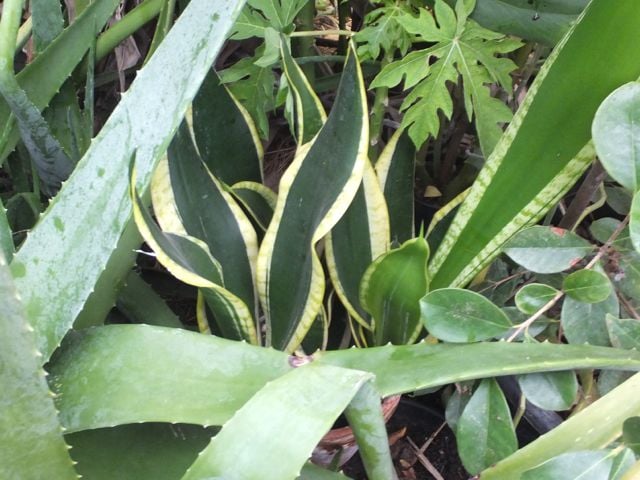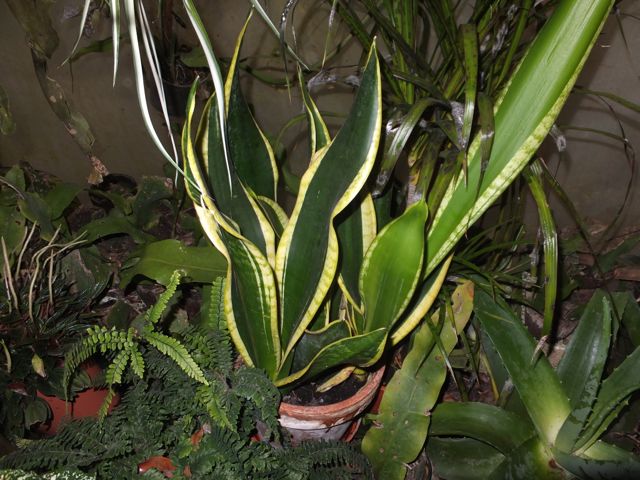 More a house than a glasshouse plant the Snake plant, Sanseviera trifasciata, is actually a very useful specimen in either place. Many plants are described as bomb-proof, the Snake plant is as close as you can get. Drought and shade seem to leave it untouched, cold is no problem though a real freeze will be. Indeed even neglect usually fails to harm a Snake plant. It’s even said the only way to kill one is by burning or drowning- perhaps it should be called the Witch plant instead. (Or maybe that is why it is also called the Mother-in-laws tongue).
More a house than a glasshouse plant the Snake plant, Sanseviera trifasciata, is actually a very useful specimen in either place. Many plants are described as bomb-proof, the Snake plant is as close as you can get. Drought and shade seem to leave it untouched, cold is no problem though a real freeze will be. Indeed even neglect usually fails to harm a Snake plant. It’s even said the only way to kill one is by burning or drowning- perhaps it should be called the Witch plant instead. (Or maybe that is why it is also called the Mother-in-laws tongue).
One of the most common of modern house plants Sansevieras are a relatively recent introduction and were seldom grown in the past. Perhaps this is because although these are truly ‘bomb-proof’ now they could be tricky until recently as old fashioned ‘town’ gas from coal was apparently fatal to them. (Probably not a good idea to keep them in houses heated by self contained gas or paraffin heaters though.)
Some consider these sword like architectural decorative plants boring but each to their own. Any blandness is more than outweighed by their sheer toughness, reliable performance, few pests, no disease, and no feeding required. Indeed other than over-watering these will put up with the most abject conditions and still look good. If there is a drawback it is these plants are slower than many to bulk up, but then large specimens are not expensive and easy to find.
You could grow them from seed but that would be very slow. Leaf cuttings are easy but oddly the new plants will not then have the markings of the parent. Identical clones are made only by splitting the crown, but that’s easy anyway.
And these are safe bets, slowly but relentlessly they grow longer swords and more of them. These come in dark green with variations of light and dark cross banding and more in several improved cultivars, the variety S. t. laurentii has lovely golden stripes on the edges. And although we only ever usually see these forms there are over two dozen similar species coming from southern and tropical Africa. S. zeylanica is from Ceylon and the name is often wrongly applied to S. trifasciata, the true species has circular tips to the leaves not pointed as in trifasciata. You may come across S. t. Hahnii ‘Birdnest’ varieties which are much squatter and rather resemble Bromeliads.
has circular tips to the leaves not pointed as in trifasciata. You may come across S. t. Hahnii ‘Birdnest’ varieties which are much squatter and rather resemble Bromeliads.
And a little known surprise is these all bloom, the tall sprays of pale spider like flowers followed by small globular fruits are not especially noticeable, that is until at night when the blooms give off a most lovely fragrance.


